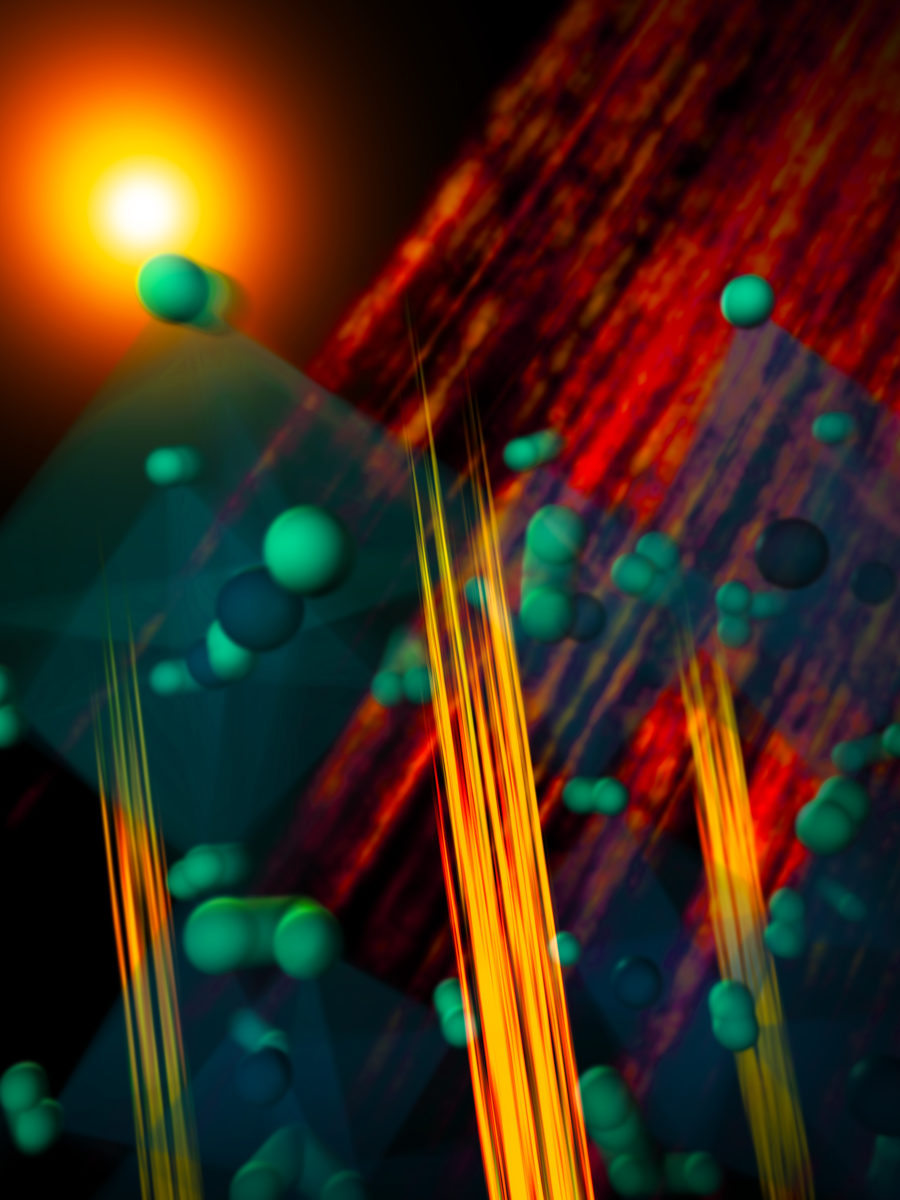Although promising in terms of efficiency and low manufacturing costs, perovskites are still far from widespread adoption, as they remain plagued by durability issues when exposed to mechanical stress, moisture and heat. As such, the worldwide research race is picking up the pace to remedy the shortcomings.
Looking to explain the equivalent or even higher efficiency of these cells compared to conventional solar cells made of silicon, a group of scientists at Stanford University and the Department of Energy’s SLAC National Accelerator Laboratory has conducted a research at the atomic scale that could help explain how electric currents move efficiently through hybrid perovskites.
For the study, released in the latest edition of journal Advanced Materials, the research team used laser pulses that match the intensity of solar radiation from both ends of the visible light spectrum – high-energy violet light and low-energy infrared light. The results were measured at the picosecond timescale. One picosecond is one trillionth of a second.
“In the first picoseconds after sunlight hits the perovskite, the electrons and holes in the crystalline lattice start to split,” said co-author, Aaron Lindenberg, an associate professor at SLAC and Stanford.
“The separation was uncovered by measuring the emission of high-frequency terahertz light pulses oscillating a trillion times per second from the perovskite thin film. This is the first time anyone has observed terahertz emission from hybrid perovskites.”
The terahertz emission also revealed that electrons and holes closely interact with lattice vibrations in the crystalline material. This interaction, which occurs on a femtosecond timescale, could help explain how electric currents navigate through the patchwork of crystal grains in hybrid perovskites, thus ensuring comparable efficiency to the one of a single crystal of pure silicon.
“Our technique could open up a new way of probing a solar cell right when the photon is absorbed, which is really important if you want to understand and build better materials. The conventional way is to put electrodes on the device and measure the current, but that essentially blurs out all of the microscopic processes that are key. Our all-optical, electrode-less approach with femtosecond time resolution avoids that problem,” said Lindenberg.
What the researchers reported as an unexpected result was that terahertz light fields are much stronger when the perovskite is hit with high-energy light waves, that is violet light versus low-energy infrared light.
“Violet light imparts electrons with excess kinetic energy, creating hot electrons that move much faster than other electrons,” said lead author, Burak Guzelturk. “However, these hot electrons lose their excess energy very rapidly.”
Although it is a major challenge to find a way to capture the excess energy from a hot electron before it relaxes, the researchers claim that harnessing the energy of hot electrons could lead to a new generation of high-efficiency solar cells.
“People have argued that it’s possible to create hot electrons in perovskites that live much longer than they do in silicon. That’s part of the excitement around perovskites,” Lindenberg noted.
Meanwhile, the ability to measure terahertz emissions could also lead to new research on non-toxic alternatives to conventional lead-based perovskites.
“Most of the alternative materials being considered are not as efficient at generating electricity as lead,” he said. “Our findings might allow us to understand why lead composition works so well while other materials don’t, and to investigate the degradation of these devices by looking directly at the atomic structure and how it changes.”
This content is protected by copyright and may not be reused. If you want to cooperate with us and would like to reuse some of our content, please contact: editors@pv-magazine.com.




By submitting this form you agree to pv magazine using your data for the purposes of publishing your comment.
Your personal data will only be disclosed or otherwise transmitted to third parties for the purposes of spam filtering or if this is necessary for technical maintenance of the website. Any other transfer to third parties will not take place unless this is justified on the basis of applicable data protection regulations or if pv magazine is legally obliged to do so.
You may revoke this consent at any time with effect for the future, in which case your personal data will be deleted immediately. Otherwise, your data will be deleted if pv magazine has processed your request or the purpose of data storage is fulfilled.
Further information on data privacy can be found in our Data Protection Policy.